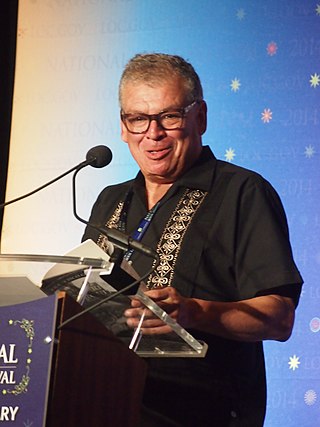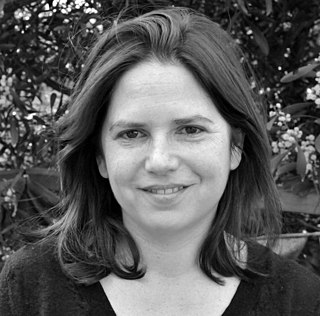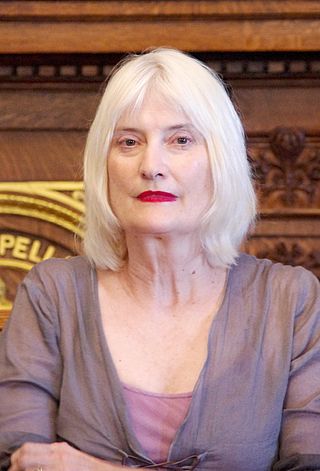Related Research Articles

Edith Wharton was an American writer and designer. Wharton drew upon her insider's knowledge of the upper-class New York "aristocracy" to portray realistically the lives and morals of the Gilded Age. In 1921, she became the first woman to win the Pulitzer Prize in Fiction, for her novel The Age of Innocence. She was inducted into the National Women's Hall of Fame in 1996. Among her other well known works are The House of Mirth, the novella Ethan Frome, and several notable ghost stories.

The Sorrows of Young Werther is a 1774 epistolary novel by Johann Wolfgang Goethe, which appeared as a revised edition in 1787. It was one of the main novels in the Sturm und Drang period in German literature, and influenced the later Romantic movement. Goethe, aged 24 at the time, finished Werther in five and a half weeks of intensive writing in January to March 1774. It instantly placed him among the foremost international literary celebrities and was among the best known of his works.

Mary Mackay, also called Minnie Mackey, and known by her pseudonym Marie Corelli, was an English novelist.

Alison Stewart Lurie was an American novelist and academic. She won the Pulitzer Prize for Fiction for her 1984 novel Foreign Affairs. Although better known as a novelist, she wrote many non-fiction books and articles, particularly on children's literature and the semiotics of dress.

Alicia Suskin Ostriker is an American poet and scholar who writes Jewish feminist poetry. She was called "America's most fiercely honest poet" by Progressive. Additionally, she was one of the first women poets in America to write and publish poems discussing the topic of motherhood. In 2015, she was elected a Chancellor of the Academy of American Poets. In 2018, she was named the New York State Poet Laureate.
Walter Abish was an Austrian-born American author of experimental novels and short stories. He was conferred the PEN/Faulkner Award for Fiction in 1981 and was awarded a MacArthur Fellowship six years later.
Adele Wiseman was a Canadian author.
Joan Murray is an American poet, writer, playwright and editor. She is best known for her narrative poems, particularly her book-length novel-in-verse, Queen of the Mist; her collection Looking for the Parade which won the National Poetry Series Open Competition, and her New and Selected Poems volume, Swimming for the Ark, which was chosen as the inaugural volume in White Pine Press's Distinguished Poets Series.

Francisco Goldman is an American novelist, journalist, and Allen K. Smith Professor of Literature and Creative Writing, Trinity College. His most recent novel, Monkey Boy (2021), was a finalist for the 2022 Pulitzer Prize for Fiction.

Karen Russell is an American novelist and short story writer. Her debut novel, Swamplandia!, was a finalist for the 2012 Pulitzer Prize for Fiction. In 2009 the National Book Foundation named Russell a 5 under 35 honoree. She was also the recipient of a MacArthur Foundation "Genius Grant" in 2013.
Helen Maud Cam, was an English historian of the Middle Ages, and the first woman to be appointed a tenured professor at Harvard University.

Lucy Corin is an American novelist and short story writer. The winner of the 2012 American Academy of Arts and Letters John Guare Writer's Fund Rome Prize, Corin was awarded a Guggenheim Fellowship in 2023 and a National Endowment for the Arts creative writing fellowship in 2015.

Terese Svoboda is an American poet, novelist, memoirist, short story writer, librettist, translator, biographer, critic and videomaker.
Catherine Bowman is an American poet.

Amy M. Homes is an American writer best known for her controversial novels and unusual short stories, which feature extreme situations and characters. Notably, her novel The End of Alice (1996) is about a convicted child molester and murderer.

Kelly Cherry was a novelist, poet, essayist, professor, and literary critic and a former Poet Laureate of Virginia (2010–2012). She was the author of more than 30 books, including the poetry collections Songs for a Soviet Composer, Death and Transfiguration, Rising Venus and The Retreats of Thought. Her short fiction was reprinted in The Best American Short Stories, Prize Stories: The O. Henry Awards, The Pushcart Prize, and New Stories from the South, and won a number of awards.
Hetty Goldman was an American archaeologist. She was the first woman faculty member at the Institute for Advanced Study and one of the first female archaeologists to undertake excavations in Greece and the Middle East.
Sari Wilson is an American novelist and writer. She has written prose and comics, and is the author of the novel Girl Through Glass. Wilson's short fiction has been nominated for a Pushcart Prize and has appeared in literary journals such as AGNI, the Oxford American, and Slice. Her essays have appeared in The New York Times, New York magazine, and Catapult.
Roberta Allen is a conceptual artist and fiction writer. Her interest in language is the bridge that connects these separate pursuits. As a conceptual artist who combines images and text, she explores how language changes or informs our perception of images. Her works included drawings, artist books, photo/text works, installations, digital prints, and sculpture. Her works in the early 1970s were inspired by Kierkegaard’s belief that our deepest experiences occur in the form of contradictions and wherever there is contradiction humor is present. Through the 1970s, she exhibited alongside Sol LeWitt, Robert Ryman and Carl Andre, among others, at John Weber Gallery in New York. In her writing, which includes, among other books, three micro and short story collections, a novel, a novella and a travel memoir, Allen questions the way we perceive the world and the self. Truths are relative and may change in a flash. The way our minds work and specifically the act of relating is her main subject. She presents disturbing views of the human scene which are often relieved by humor.
Kelly Luce is an American fiction writer and editor. She is the author of the short story collection Three Scenarios in Which Hana Sasaki Grows a Tail and the novel Pull Me Under. In 2016 she was named a fellow at the Radcliffe Institute for Advanced Study at Harvard University. She has contributed writing to New York Magazine,The Sun, The Southern Review, and The Chicago Tribune, and the New England Review.
References
- 1 2 3 4 5 6 7 8 9 10 11 "Collection: Edith Konecky papers | Smith College Finding Aids". findingaids.smith.edu. Retrieved 2020-06-12.
 This article incorporates text available under the CC BY 3.0 license.
This article incorporates text available under the CC BY 3.0 license. - 1 2 3 4 5 6 7 8 "Edith Konecky | Jewish Women's Archive". jwa.org. Retrieved 2020-06-12.
- ↑ "Results for 'au:Konecky, Edith.' [WorldCat.org]". www.worldcat.org. Retrieved 2020-06-12.